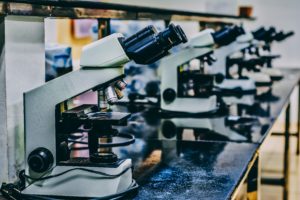While the phenomenon of identical twins may sound easy to comprehend, it is extremely important to understand what we mean by the term “Identical Twins” before diving deep into its features and other characteristics.
Identical twins, also known as monozygotic, are twins that have been developed from a single egg/sperm. While this combination splits after a few days of contraception, the genetic makeup and the characteristics of the twins turns out to be similar.
Non Identical twins, on the other hand, are the most common type and are also known as fraternal or dizygotic twins. This takes place when more than one egg is released from the ovary and both eggs are fertilised by a different sperm.
Now, the question that arises is; how do you explain identical twins that do not look identical?
When it comes to identical twins, there are all kinds of stereotypes about them looking exactly the same, and there not being a difference in any of their physical characteristics. However, researchers have confirmed that there are other forces at play, and the different theories to explain this phenomenon may go beyond just science.
Even if twins have the same kind of genes, there are several factors that can determine and bring changes to the way they look and behave. Mostly, newborn twins are identical but once they get out into the world and start forming an identity of their own, the physical and mental changes that they undergo are clearly visible.
To narrow it down, there are two major factors that are responsible for identical twins not looking identical; Environmental differences and DNA differences.
ENVIRONMENTAL DIFFERENCES
There are various environmental influences that can affect the genes of identical twins. There are two types of environments that the twins are majorly exposed to. First, inside the womb of the mother, and second, the place and culture that they are bought up and made to socialise in.
Inside the womb, one twin may have more connection to the placenta while the other may not. This can change the physical appearance of the twins and cause a size discrepancy between them. The change continues as the twins grow up into adults. Another influencing factor is that of diet and nutrients that the twins receive in the womb, which is not always equal. Finally, the amount of blood supply also plays a role in how the twins look.
Even though most twins grow up in the same house environment, there are various factors that shape their personalities, appearance, and interests. It is not necessary that both twins suffer from the same childhood illness and traumas. In fact, most pairs of twins want to voluntarily develop different qualities once they reach their teenage years.
DNA DIFFERENCES
While it is true that identical twins initially start with identical DNA, the process is much more complex. The fertilised egg divides a few times before the calls split into two. These cells finally become one of the identical twins. The process of the cells dividing, again and again, can include mutations and changes in appearances.
A cell needs to copy its DNA before it can divide and sometimes, it is natural for the cellular system to not copy the DNA as it is. All the cells have different characteristics and when they meet, the appearance of one of the twins is bound to be different from the other one. While one cell may affect the eye colour, others may affect the skin.
At the end of the day, such topics become important and essential to understand from the point of view of practicality and keeping in mind that they are extremely valuable in real life. In fact, you will be shocked to know that there are a rare number of people who fully understand and can apply this phenomenon in real life instead of just in theory in the classroom.
We hope this topic will turn out to be of help to you now and in the future!
At ExperiHub, we teach Science and Mathematics by bringing concepts from the real world into the classroom. We conduct science experiments and have myriad science projects for better learning and understanding of concepts. If you want to learn more about Experiential Learning and cool home experiments, browse through our Online Sessions and Youtube Channel!



